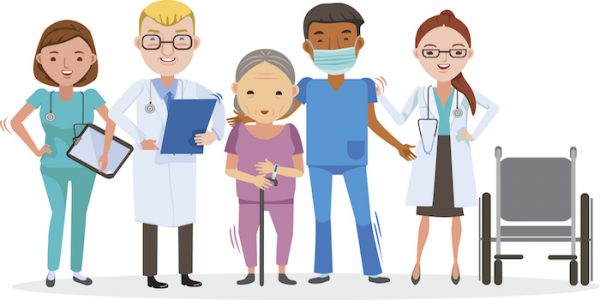There are thousands of medical transportation companies- big and small companies alike are playing in the non-emergency medical transportation (NEMT) space. Yet, medical transportation is still a huge barrier for patients.
So, what makes Roundtrip different? In short: Coordination.
When patients need transportation, they don’t just need a ride from point A to point B. It’s not just about the vehicle that picks them up and drops them off; it’s about the coordination between the care team, patient, transportation company, and the appointment that makes all the difference.
The transportation
Obviously, transportation is important. While many patients can get in and out of a car without any assistance, sometimes patients may require additional help. A patient may need someone to sign them out after surgery or need help in and out of the vehicle. He or she may have a walker, oxygen tank, or a wheelchair. Just as consumers enjoy on-demand access to sedan vehicles, a patient may need similar access to a wheelchair van or non-emergency ambulance. A comprehensive solution is one that can address all levels of patient need.
“With Roundtrip, it’s as easy as opening up the web browser and putting everything in and not having to pick up the phone at all to set up transportation.”
— Mary Faith Cressman, Medical Social Worker, Nemours/A.I. duPont Hospital for Children
The payment
Transportation can be paid for by a healthcare organization, the patient, or insurance. In fact, 20% of the rides Roundtrip completes are covered by insurance. It can be confusing and extremely time-consuming for patients and care coordinators to navigate the payment landscape. Having to find an in-network transportation provider, navigating insurance company phone lines, and obtaining a prior authorization complicates the process even further. Patients need to concentrate on getting/staying healthy, and care coordinators need to focus on providing care- coordination of transportation should not be the biggest consumption of their time and efforts.
“[Reliable transportation] is one less thing a patient needs to worry about as they focus on their health.”
— Christine Winn, Senior Vice President, MD Anderson Cooper Cancer Institute
The reminders
Setting up a ride isn’t enough. Even if the patient has all the relevant information at the time of booking, consistent communication in the days leading up to the ride is imperative to ensure they are ready at the time of pick up. At Roundtrip, our no-show rate is ~3% because we communicate to the patient multiple times before the ride and learn of any issues with insurance or changes to the appointment up front, not an hour after the ride was supposed to occur.
The real-time status
Transparency across the entire transportation sequence is essential. Patients and care coordinators need to know about ride status and on-time performance, for all levels of vehicles. Communication about late rides or will-call trips is time-sensitive, and not every healthcare organization has a full-time transportation manager to watch and coordinate each ride and adjust schedules or ride times accordingly.
